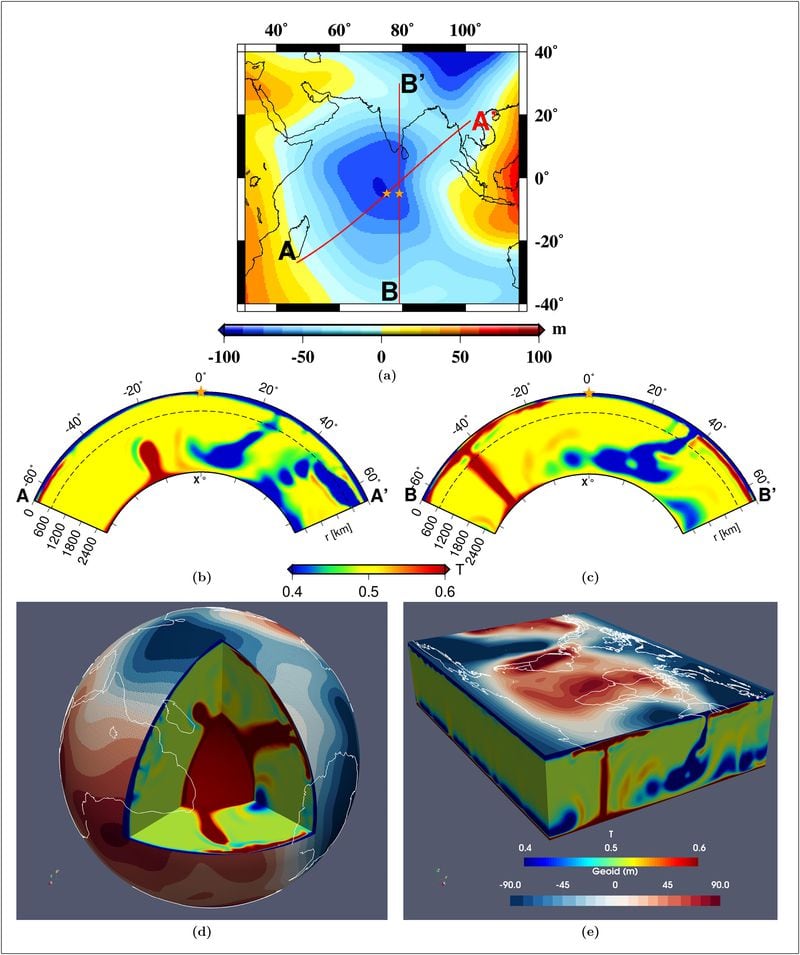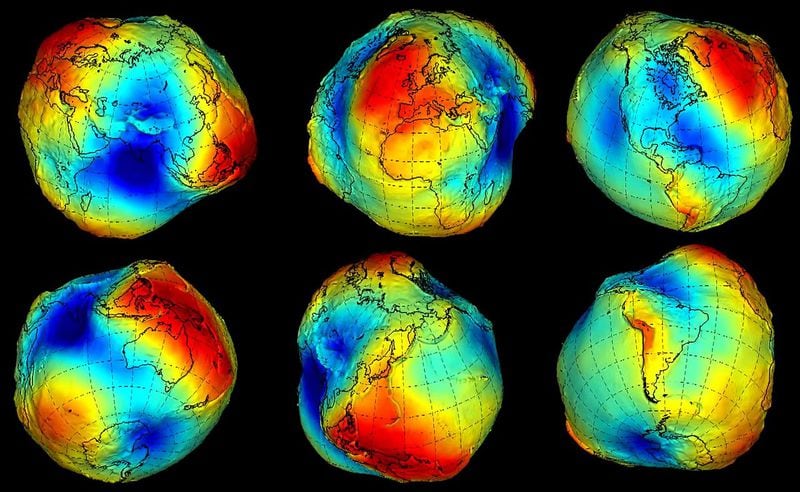In the middle of the sea is one of the largest gravitational anomalies on the planet that has formed since the formation of the Earth began. What effects does this gravitational hole produce?
First of all, it should be noted that, contrary to what one might think, our planet is not a perfect sphere. The geographical configuration of the Earth is full of bumps and differences in its varying density. More than a “pole-flattened sphere”, the planet we inhabit has a more irregular, wavy map known as the geoid.
This generates that in some areas there are differences in the acceleration of gravity, and at a specific point this amplitude surprisingly exceeds the average measurements. What is this due to and what effects can these “gravitational holes” have?
There is a specific point, in the depths of the Indian Ocean, where this pull of gravity weakens to an extremely low level, leaving what is considered a “hole” massif of about three million square kilometers, where the seabed plunges into a vast depression.
The name by which experts know it is Indian Ocean Lower Geoid (IOGL) . But the reasons for its origin had not been fully explained.

This gravitational anomaly, one of the deepest on Earth, has been measured and analyzed using data collected from ship and satellite measurement systems. This is how a group of scientists from indian institute of science published a study in the journal Geophysical Research Letters , where it is explained how they are produced and what effects these “gravitational holes” can have on the rest of the planet.
geoscientists, Debanjan Pal and Attreyee Ghosh, believe that the answer to these questions lies more than 1,000 kilometers below the earth’s crust, where the cold, dense remnants of an ancient ocean sank into a “slab cemetery “under Africa about 30 million years ago, stirring hot molten rock.
In 2018, a ship full of scientists from National Polar and Ocean Research Center of India undertaken to deploy a series of seismometers along the seabed of the deformation zone, to map the area. To be so far from the coast, little seismic data has been collected in the area before. However, the results of this 2018 survey highlighted the presence hot columns of molten rock rising under the Indian Ocean and, somehow contribute to its big bump.

But a longer view was needed to reconstruct the lower geoid in its early stages. Pal and Ghosh therefore followed the formation of the massive geoid by modeling the friction of tectonic plates against the warm and sticky coat Earth over the past 140 million years.
At the time, the indian tectonic plate began to break away from the supercontinent, gondwana to begin his journey north. As the Indian Plate advanced, the seabed of an ancient ocean called Tethys Sea it sank into the Earth’s mantle and the Indian Ocean opened up behind it.
What is a gravitational hole?
Pal and Ghosh performed simulations using more than a dozen plate motion and mantle motion computer models, comparing the shape of the ocean depression predicted by these models with observations of the hump itself.
According to the research, the models that reproduced the Indian Ocean geoid in its current form had one thing in common: columns of low-density hot magma floating in the depths. It was these sources of hot matter that created the geoid under as explained in their study by Pal and Ghosh.
“In summary, our results suggest that to match the shape and width of the observed geoid, hot material sources must be buoyant enough to reach the depths of the middle mantle ”, writing the duo of scientists
The first of these undersea sources of hot material, also called “mantle plumes”, appeared about 20 million years ago, south of the Indian Ocean geoid, and about 10 million years after the ancient Tethys Sea subsided into the lower mantle. As the plumes spread under the lithosphere and advanced towards the Indian peninsula, this gravitational hole has intensified.
Since their results are consistent with the elements of the previous modeling work by Ghosh from 2017, the researchers suggest that the mantle plumes were pushed upward after the Tethys seafloor plunged into the lower mantle.

According to measurements of the acceleration of gravity on Earth, there are parts where the standard value changes drastically. These variations can be more or less important when they move away from 9.8 meters per second squared, which is the standard measurement for our planet. Any other figure that emerges is known as an anomaly.
In the Indian Ocean region studied, it was found that there is a measure of the acceleration of gravity well above the normalized level on Earth. Perhaps the most important on the planet. However, this does not mean that the objects flow with more force or speed in said area. .
Also read in What Happens:
Source: Latercera
I am David Jack and I have been working in the news industry for over 10 years. As an experienced journalist, I specialize in covering sports news with a focus on golf. My articles have been published by some of the most respected publications in the world including The New York Times and Sports Illustrated.


